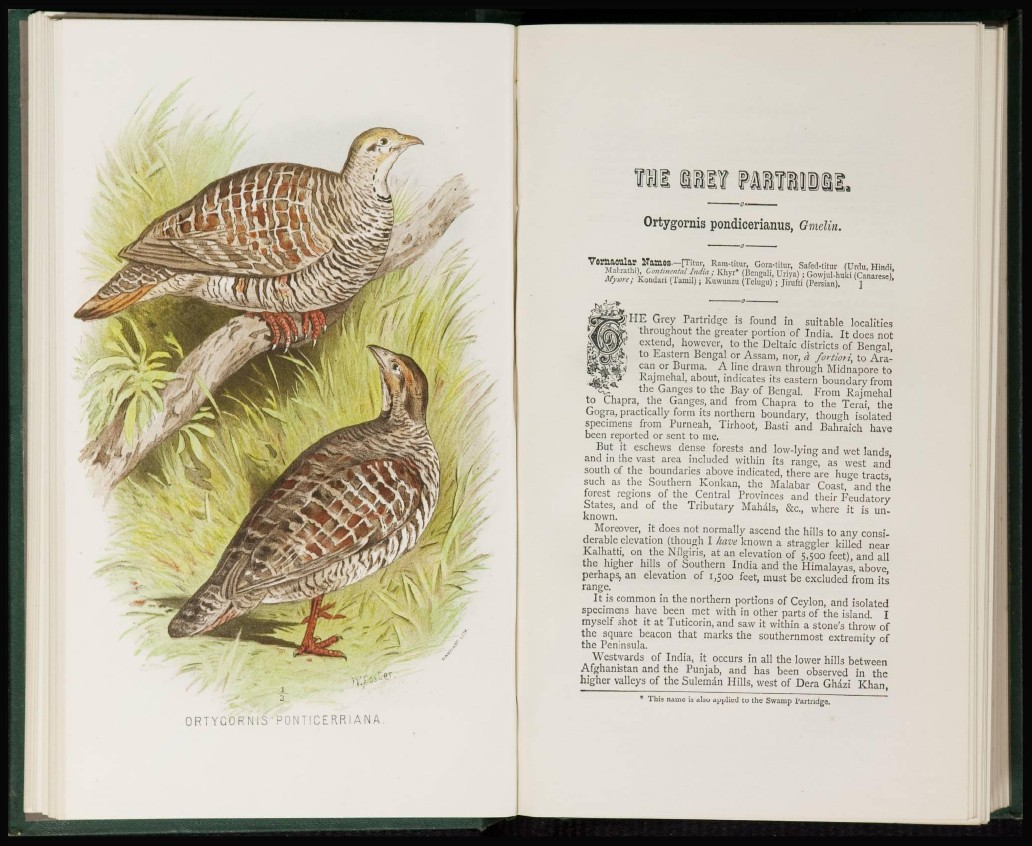
Ill 111? fWllii
—- 0~ •
Ortygornis pondicerianus, Qmelin.
• o .
V 6 ^ S ? M 1Jam,0S-[7i
/
Ul';'. R?™"'!iU,'i G o r a - ' « ' " - , Safed-titur (Urdu, Hind!,
Mahrath.), Continental India ; Khyr* Bengali, Uriya) ; Gowiul-hud ir,n,r, ,
Mysore; Koudari (Tamil); Kuwunzu (Telugu) ; Jirufti (Persian)^ ]
HE Grey Partridge is found in suitable localities
throughout the greater portion of India. It does not
extend, however, to the Deltaic districts of Bengal,
to Eastern Bengal or Assam, nor, a fortiori, to Aracan
or Burma. A line drawn through Midnapore to
Rajmehal, about, indicates its eastern boundary from
the Ganges to the Bay of Bengal. From Rajmehal
to Chapra, the Ganges, and from Chapra to the Terai, the
Gogra, practically form its northern boundary, though isolated
specimens from Purneah, Tirhoot, Basti and Bahraich have
been reported or sent to me.
But it eschews dense forests and low-lying and wet lands,
and in the vast area included within its range, as west and
south of the boundaries above indicated, there are huge tracts,
such as the Southern Konkan, the Malabar Coast, and the
forest regions of the Central Provinces and their Feudatory
States, and of the Tributary Mahals, &c, where it is unknown.
Moreover, it does not normally ascend the hills to any considerable
elevation (though I have known a straggler killed near
Kalhatti, on the Nilgiris, at an elevation of 5,500 feet), and all
the higher hills of Southern India and the Himalayas, above,
perhaps, an elevation of 1,500 feet, must be excluded from its
range.
It is common in the northern portions of Ceylon, and isolated
specimens have been met with in other parts of the island. I
myself shot it at Tuticorin, and saw it within a stone's throw of
the square beacon that marks the southernmost extremity of
the Peninsula.
Westwards of India, it occurs in all the lower hills between
Afghanistan and the Punjab, and has been observed in the
higher valleys of the Suleman Hills, west of Dera Ghazi Khan,
* This name is also applied to the Swamp Partridge.